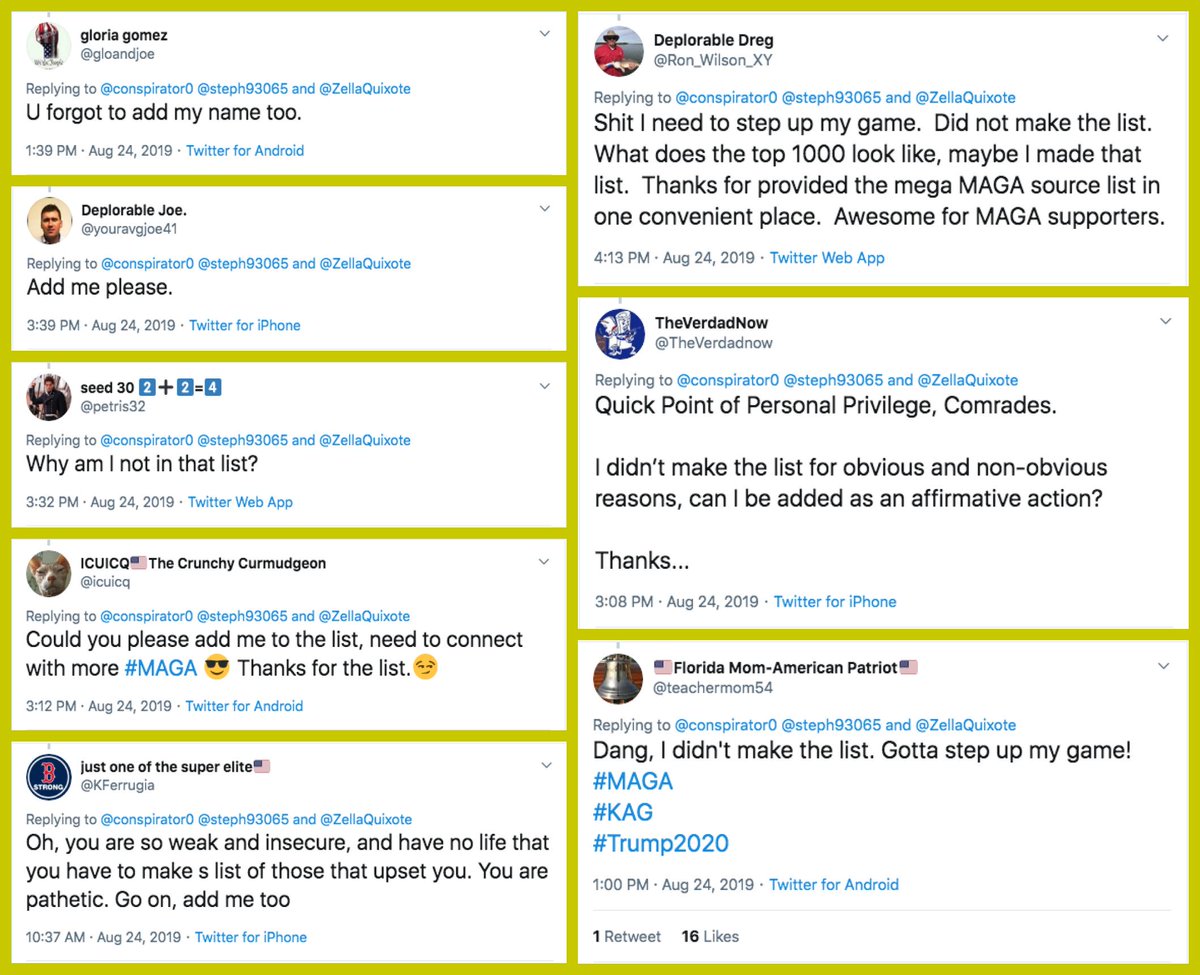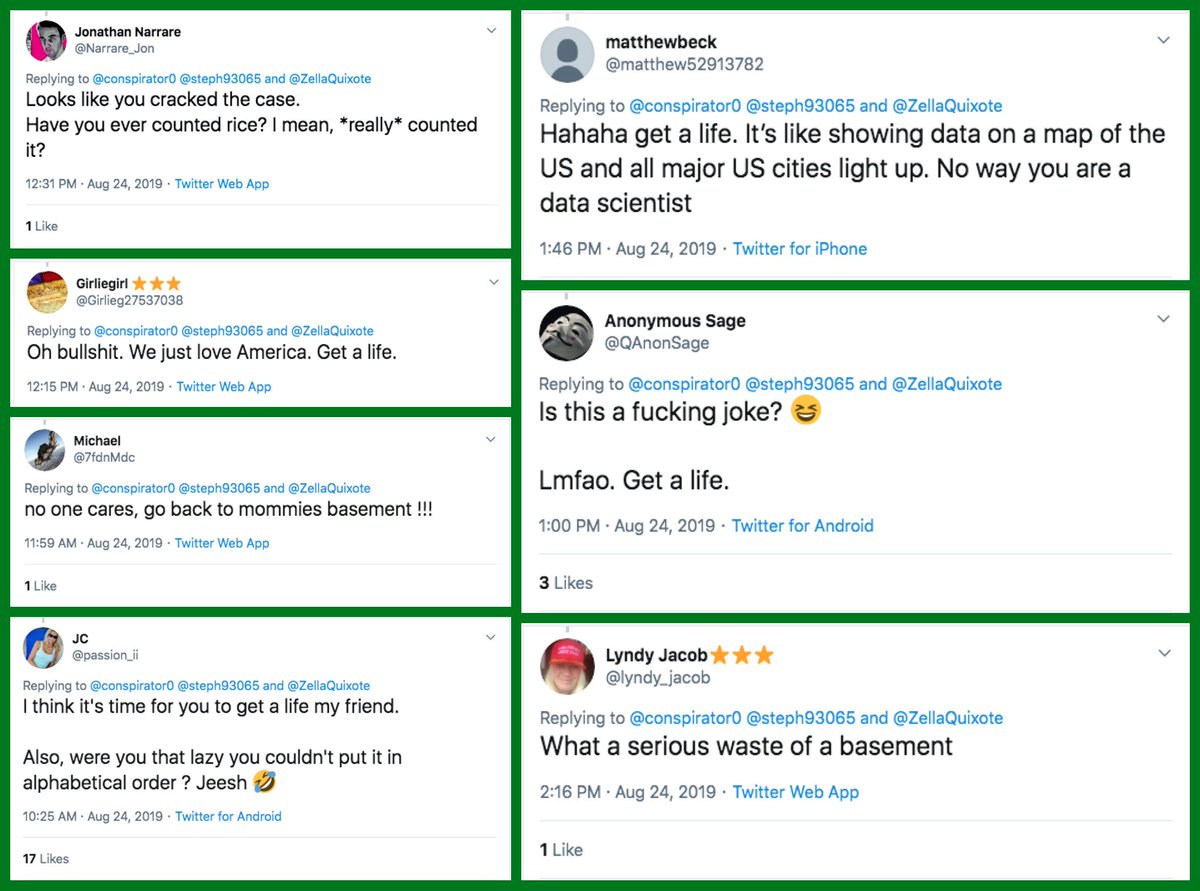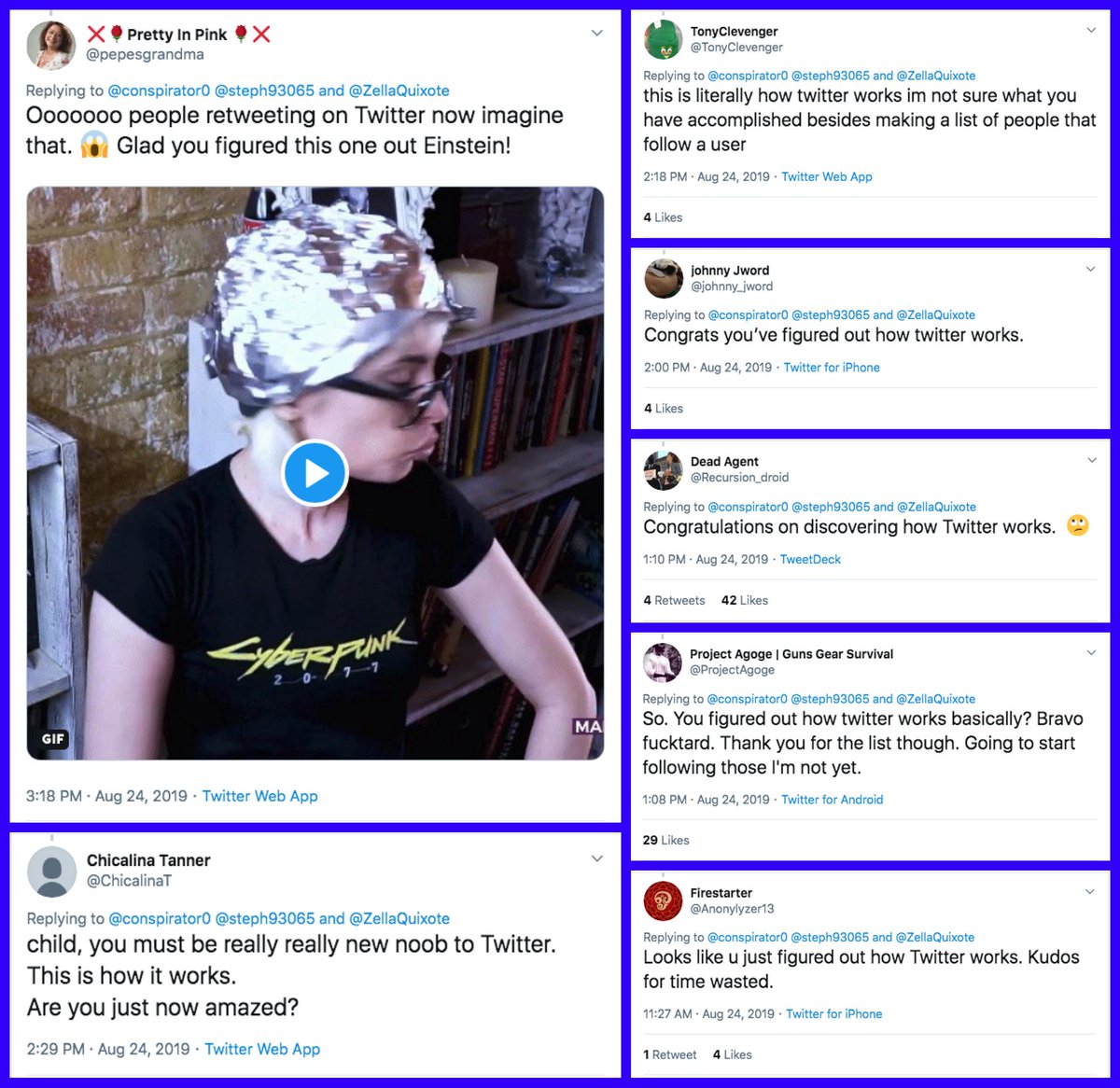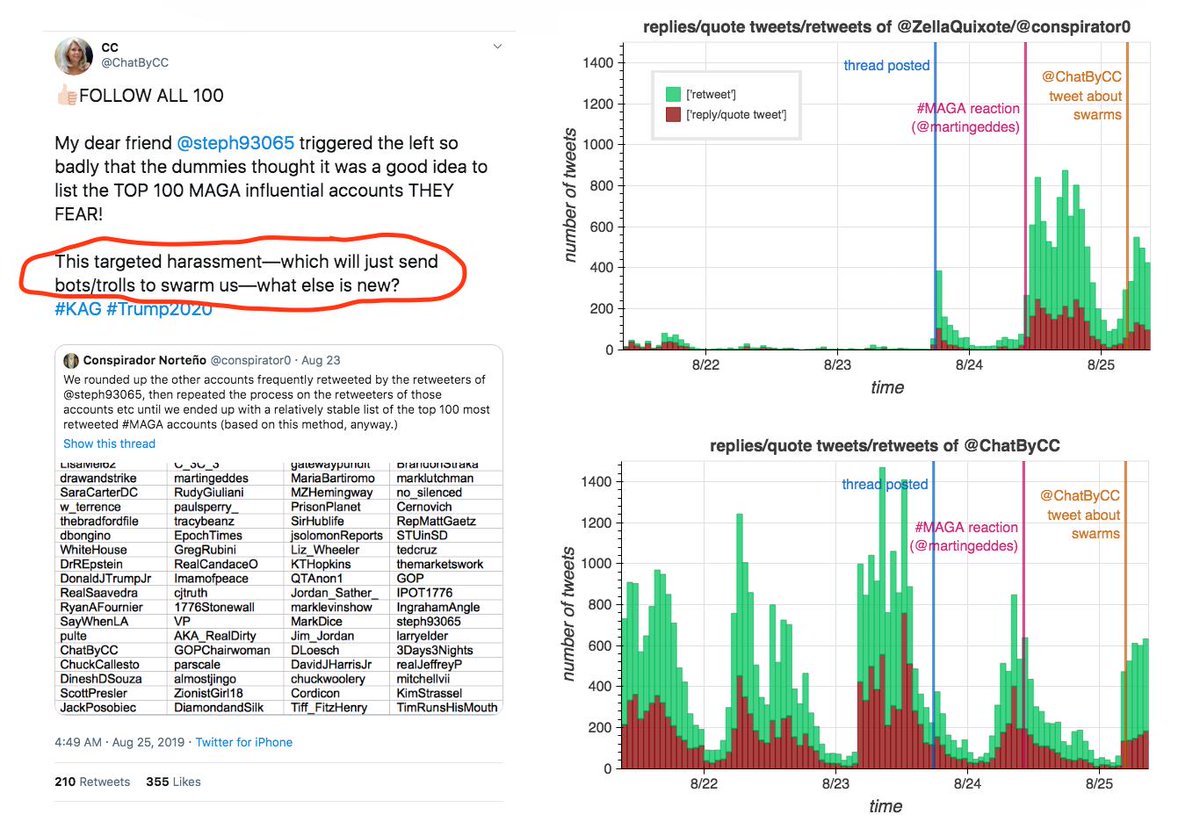This thread about 100 key #MAGA accounts and the network they form drew some interesting attention, especially from the right-hand side of the political aisle. We got all meta and analyzed the reactions.
cc: @ZellaQuixote
cc: @ZellaQuixote
https://twitter.com/conspirator0/status/1165063839160918017
@ZellaQuixote In the 24 hours since the thread was posted, it received 4128 retweets, replies, quote tweets, and retweets of replies/quote tweets from 2821 accounts. The initial burst of traffic is mostly non-MAGA accounts, with the #MAGA attention materializing the following day. 

@ZellaQuixote 14 of the accounts listed in the thread (beginning with @martingeddes) interacted with it in some way during the 24 hours after it was launched. The reply from @martingeddes appears to have kicked off the ensuing wave of #MAGA interest. 

@ZellaQuixote @martingeddes The #MAGA replies tend to fit into one of several major categories. Comments along the lines of "hey thanks for this list of accounts to follow!" are the most common, but several other themes turn up repeatedly as well. (Retweets are excluded from this portion of the analysis.) 



@ZellaQuixote @martingeddes Some examples of the #MAGA replies from the following categories:
- "thanks for list of accounts to follow"
- demonization as reaction to descriptive data
- "add me to the list!"
- replies telling us to get a life etc



- "thanks for list of accounts to follow"
- demonization as reaction to descriptive data
- "add me to the list!"
- replies telling us to get a life etc




@ZellaQuixote @martingeddes More examples:
- non-sequitur replies about Russia or bots despite neither being mentioned in the thread
- "congrats on figuring out how Twitter works"
- assertions that some of the accounts are "fake MAGA"
- replies imploring us to research topics of the replier's choice



- non-sequitur replies about Russia or bots despite neither being mentioned in the thread
- "congrats on figuring out how Twitter works"
- assertions that some of the accounts are "fake MAGA"
- replies imploring us to research topics of the replier's choice




@ZellaQuixote @martingeddes Update: 22 of the 100 accounts in the network described in our previous thread have now interacted with it. Here's a visualization of how it spread: 

@ZellaQuixote @martingeddes We decided to test @ChatByCC's assertion about swarming, and thus far it seems like projection: interactions with her account haven't varied significantly since we posted our #MAGA network thread, whereas ours have definitely spiked. 

• • •
Missing some Tweet in this thread? You can try to
force a refresh































